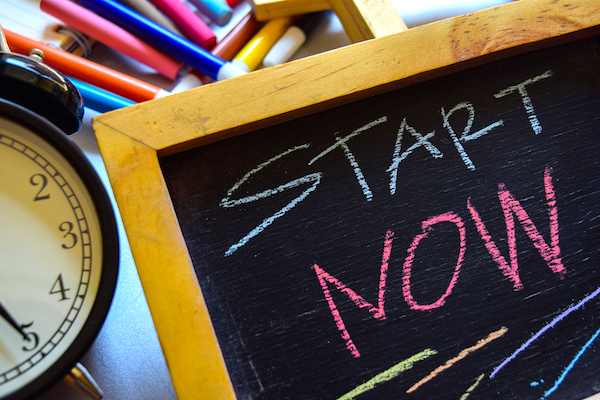Well-Designed ‘Do Nows’ Set the Pace for Learning

When you ask teachers what they would call Do Nows if they couldn’t call them that, they come up with terms like warm-up, quick review, and first steps. My favorite is brain defibrillator.
The point is, people come up with different titles because they have different perspectives on the purposes of Do Nows (or whatever you want to call them)—and for good reason.
Do Nows can be used for different objectives: to review material, introduce new material, or hook students, for example. When used routinely, Do Nows establish a norm of urgency in the class: every day you walk in and start working immediately. No dawdling.
Here are some general rules for Do Nows
Keep them short. The typical range is four to seven minutes, with no more than two to three minutes to sum up. Any longer than that and it’s not a Do Now; it’s an activity.
Make sure students have the required skills. Don’t expect students to try something completely unfamiliar unless you’re in the mood for chaos. Students need to have some background knowledge or experience, or else they’re likely to ask lots of questions.
Provide clear directions. Be as specific as possible. No one should raise a hand and ask how to do the Do Now. Students must be able to complete Do Nows silently and independently. When I taught high school English at North Star Academy in Newark, New Jersey, every Monday as students entered my classroom, I gave them a hole-punched handout that listed the Do Nows and homework assignments for the week. Students completed the Do Nows in their marble composition notebooks, which I collected every two weeks and graded for completion.
No one ever asked me, “What’s the Do Now today?” or “What’s tonight’s homework?” In addition to maximizing efficiency in the class (we wasted no time copying from the board), this protocol helped students develop time management skills: they could anticipate assignments that were coming up and plan accordingly. Also, parents appreciated receiving the document via email to support their children. (Note: If I needed to revise a planned Do Now or homework, I would write it on the whiteboard in red marker and point to it.)
Practice makes permanent. That’s the good news. But if you practice the wrong thing, it’s also the bad news. So, make sure your students are practicing things correctly. For more thoughts on how to practice effectively, check out Practice Perfect by Doug Lemov, Erica Woolway, and Katie Yezzi.[1]
Avoid “copy the error” syndrome. As I noted in The Literacy Cookbook, some teachers make the colossal mistake of requiring students to copy grammatically incorrect sentences in order to correct them. The problem with this approach is that the original version can be burned into students’ brains, and at best, the process of correcting will only neutralize the errors.[2] A better alternative is to employ the approach that I advocate in Using Grammar to Improve Writing: show students grammatically correct models that they can then imitate.[3]
Consider how your Do Nows relate to your objectives. Although it is not wrong to use “evergreen” Do Nows (which review skills you are constantly working on, such as paraphrasing or inference), ideally students should be able to see a logical connection between the Do Now and what you are trying to accomplish in the day’s lesson. For example, the Do Now’s vocabulary words appear in the text they will be closely reading today.
Adding academic urgency
Do Nows can be high-leverage tools to establish academic urgency in your class, especially if you do the following two things:
Hold students accountable. As I noted in this MiddleWeb post on combating learned helplessness, if you assign classwork and go over it before holding students accountable for it, then they’ll realize they can just wait till the timer rings, then copy the answers as you go over them. So they don’t even try to do the work. They sit quietly or chat with a neighbor, which is more fun.
Instead, you should circulate and assign credit (with a stamp or initial) as students work, collect it before reviewing, or provide and give credit for “notes from discussion” that students must complete in addition.
Use Do Nows to shine a spotlight on high-quality student work. The beginning of the class offers a fresh start. When students know that you’re going to use what Doug Lemov calls “Show Call,” a technique to feature their work at random (like cold-calling but visual [4]), they tend to put more effort into it.
A 5th-grade teacher I’ve been working with lately has used this approach to great effect: she actively monitors student work during the Do Now and puts stars on two or three excellent papers. As she collects papers from the rest of the class, she asks the “stars” to stand up.
One by one, she places their work under the document camera, invites them to read aloud what they wrote, and asks their peers to explain what these “stars” did well. This is a powerful opportunity for students to praise one another (building a positive classroom culture) and to identify exactly what makes the exemplars effective so that others can use them as models later.
This approach also adds a buzz of excitement and competition during an otherwise mundane exercise. PS—I’ve also seen teachers use Show Call to highlight exemplars of the previous day’s Exit Ticket, achieving similar purposes and impact.
The bottom line? Do Nows done well can signal the beginning of a beautiful lesson.
[1] Doug Lemov, Erica Woolway, and Katie Yezzi, Practice Perfect: 42 Rules for Getting Better at Getting Better (San Francisco: Jossey-Bass, 2012).
[2] Sarah Tantillo, The Literacy Cookbook: A Practical Guide to Effective Reading, Writing, Speaking, and Listening Instruction (San Francisco: Jossey-Bass, 2013), 103.
[3] Sarah Tantillo, Using Grammar to Improve Writing: Recipes for Action (BookBaby, 2018).
[4] Doug Lemov, Teach Like a Champion 2.0: 62 Techniques That Put Students on the Path to College (San Francisco: Jossey-Bass, 2015). For a detailed description of “Show Call,” see 290-299.




































I use these, but I call them bellringers. Upon entering the classroom, they are to begin working independently. It will be either a review of another lesson or a preview of today’s lesson. It should only take about 5-10 minutes. Works great!
I agree, Do Nows are great for reviewing materials, introducing new materials, and for putting students on the spot to check for mastery.
Students love the Do Now!! They especially enjoy when they can share what they have written.